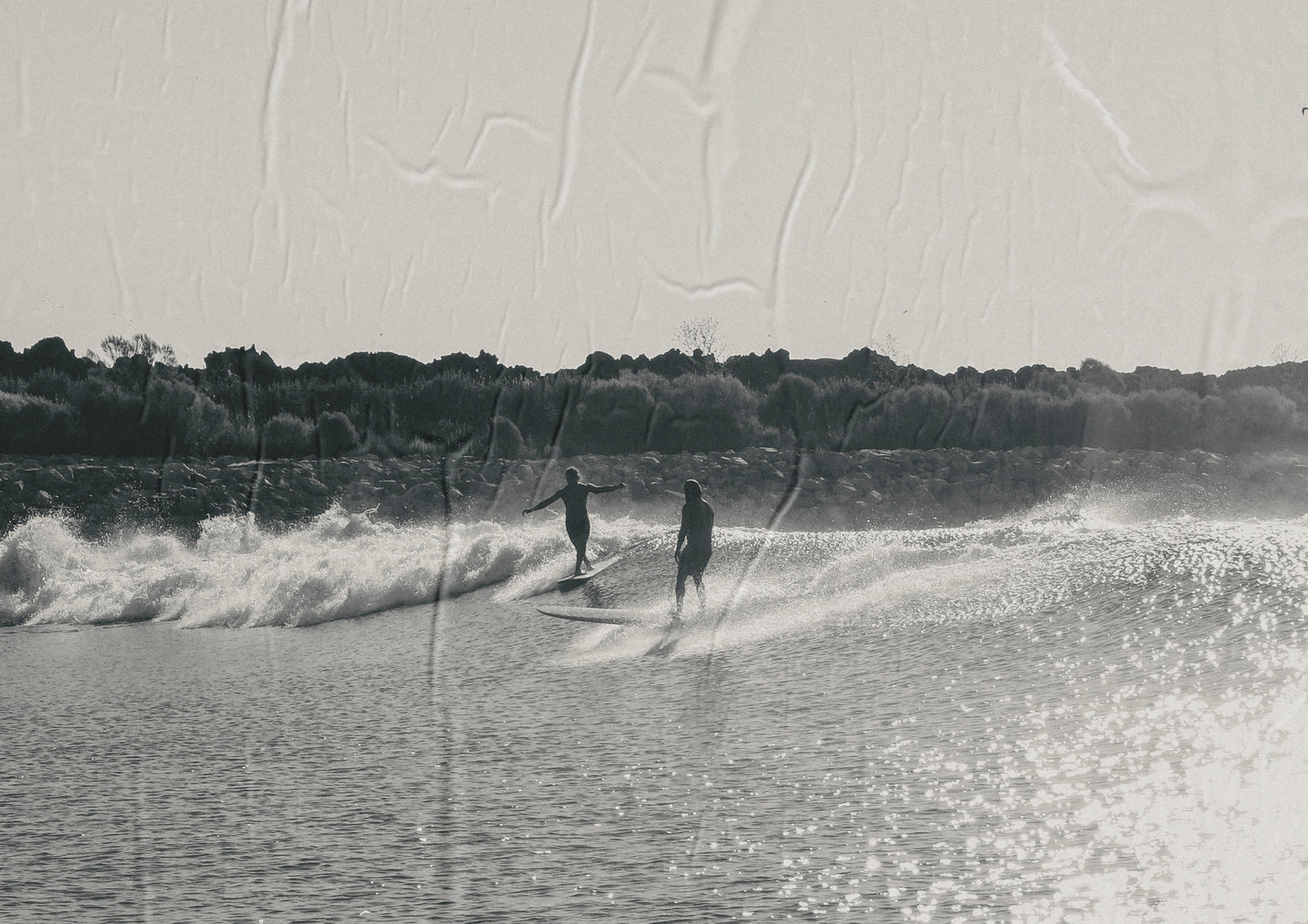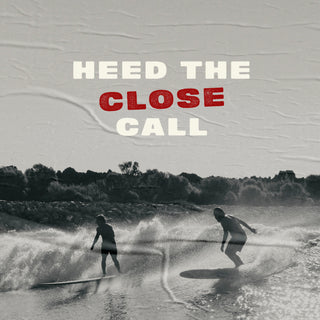
We’re excited to bring you a new blog series entitled, “Heed the Close Call,” a play on our tagline, Heed the Call. These are stories about when amigos’ adventuring went south, fast. For our inaugural story, senior copywriter Killian Hagen sat down with Nate Floyd—an expert surfer who’s joined us on many trips over the years and has become a close friend. Enjoy!
Thanks for telling us your story. Can you introduce yourself?
NF: My name’s Nate Floyd. I’m from Corpus Christi, Texas. I help run the family business, Wind and Wave Watersports. We’re a retailer for Howler Brothers! I’ve been a Howler Ambassador since 2019, but I’ve been friends with the Howler crew for much longer.
Nice! And we are grateful for it. Ok, so you have a pretty epic story of a time you heeded the close call. How would you sum up your experience in one sentence?
NF: In September 2021, I survived a mini tsunami/avalanche while chasing novelty waves with the Howler Brothers crew in Galveston Bay.
Whoa. I can’t wait to hear more about this haha. Before we get into it, what are three words you’d use to describe your close call?
NF: Too damn lucky…
Sounds like it. Alright, how did you heed the close call?
NF: During a fall 2021 shoot with Howler Brothers, the opportunity came up to ride some tanker waves in the Houston shipping channel. Being an experienced surfer, I didn’t hesitate at all as they usually peel perfectly along a shoreline. Not this time.
In case people aren’t familiar, what is a tanker wave?
NF: A tanker wave is literally a wave created by large cargo and tanker ships passing through a ship channel. It makes waves form and break on shoals and sandbars along the ship channel that last for 30+ minutes. You can ride them for over 10 minutes!
Got it. So what was different this time?
NF: The last tanker wave I was riding turned 90 degrees and closed out on me, pinning me in between a mountain of water and a large breakwater designed to provide protection for fragile marine ecosystems. I was trying to hold on as long as I could to see if the wave would bend outward and give me more space to get away from the rocks, but it didn’t. Instead, as soon as the wave turned, I was blasted off my board and dragged along the rocky shoreline for roughly 50 yards or more across its entirety, completely out of my control. These rocks have razor sharp barnacles and oysters, rebar, driftwood, and caves, among other hazards.
Holy crap. How long did this last?
NF: Well, it felt like an eternity, but in reality it was under a minute. I was caught in what I describe as a mini tsunami. The entire bay was rushing like a tidal bore behind me, chasing me and crashing. Relentless energy surged across the rocks, while the water piled up and intensified in strength. I was bouncing off boulders and holding my breath as I was ragdolled underwater. I knew I was in a messed up situation, and protecting my head was my number one concern. Having experienced a traumatic brain injury before, it felt like another one was just a blow away. I was praying I didn’t get impaled, stuck in a cave, or dealt a death blow to the head.
[Staring in disbelief] How did you get out?
NF: After going through the rinse cycle, I was finally able to claw myself out of the raging current by dragging my feet and hands to slow myself down and break free from the waves' stranglehold. I pulled myself off the rocks and looked at the sky and said ‘Thank you.’ Using my own strength and shock adrenaline, I climbed aboard the rescue ski that was following us and the boat moments later. Although I was beat up, bruised, bloody, and shaking from adrenaline, I happened to avoid major injury (or worse). Just a minor meniscus tear for which I was able to rest and do physical therapy to heal. This could have ended in a hundred different outcomes.
Indeed. It’s…a miracle you weren’t killed. I gotta ask: would you do it again?
NF: I absolutely would, but I would take more precautions. We caught such a good wave prior to the incident, but I probably would surf a different section of the ship channel next time. Chasing waves in the ocean or man-made waves gives me a thrill that has yet to be matched. I’ll be chasing waves until the end of my days.
Love it. What advice would you give to readers after your experience?
NF: When I say tanker surfing is dangerous, I mean it with every ounce of my being. Don’t do it if you are not an experienced surfer. Don’t do it without a guide who knows the bathymetry (the measurement of depth of water in oceans) and path of these tankers. Don’t do it without proper rescue support with you every step of the way. We had a guide—and still—water can do funny things. This is not for the average surfer, despite how easy and fun it seems. You can not just pull up and score these waves. The people I was with have been doing this a long time, but water never does the same thing twice. Our guide had never seen what happened to me in 10 years of surfing this area. But when you have tides, winds, and tankers weighing hundreds of thousands of tons pushing waves; anything can happen in the blink of an eye. Just thankful to still be here in one piece.
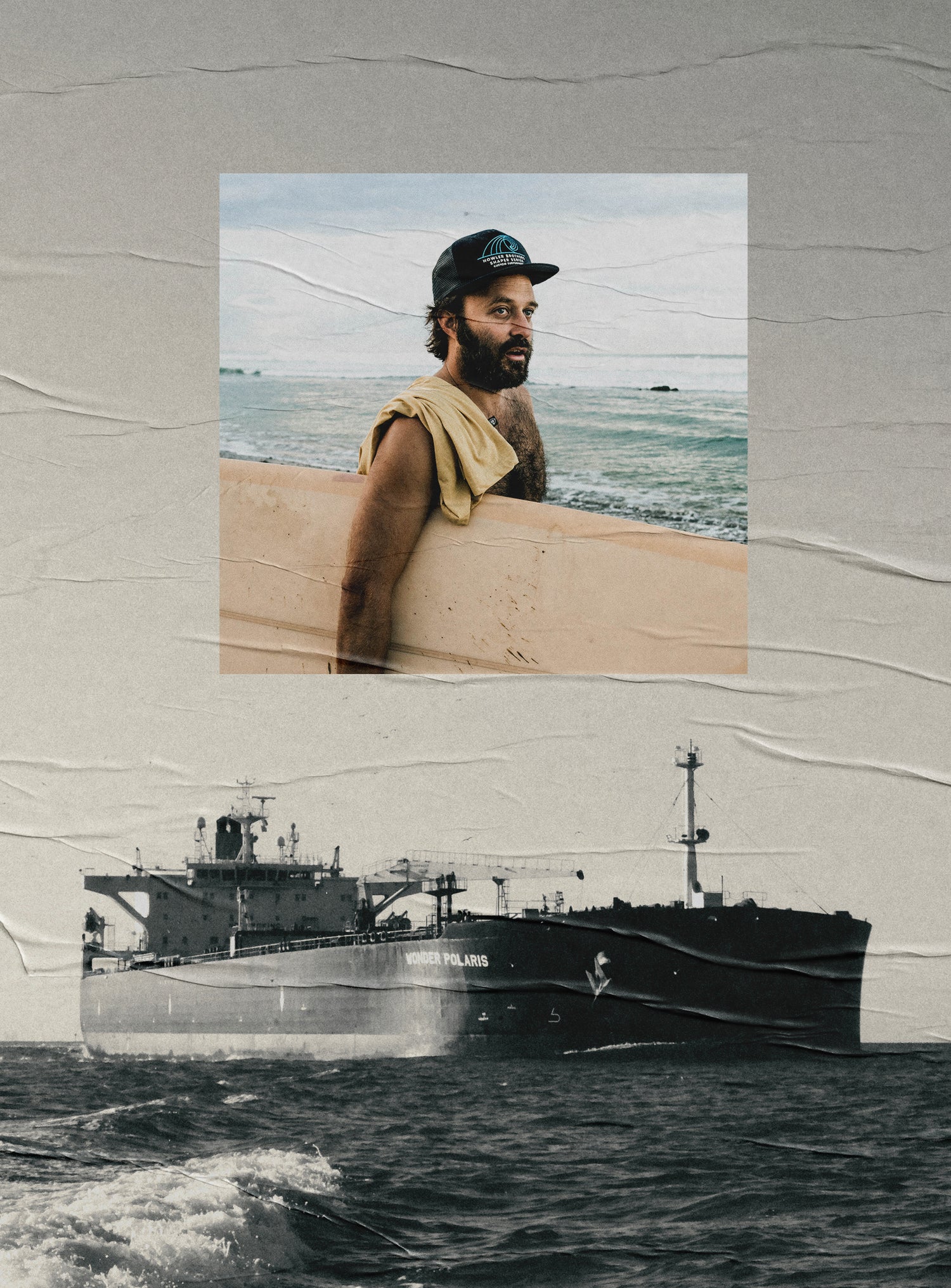
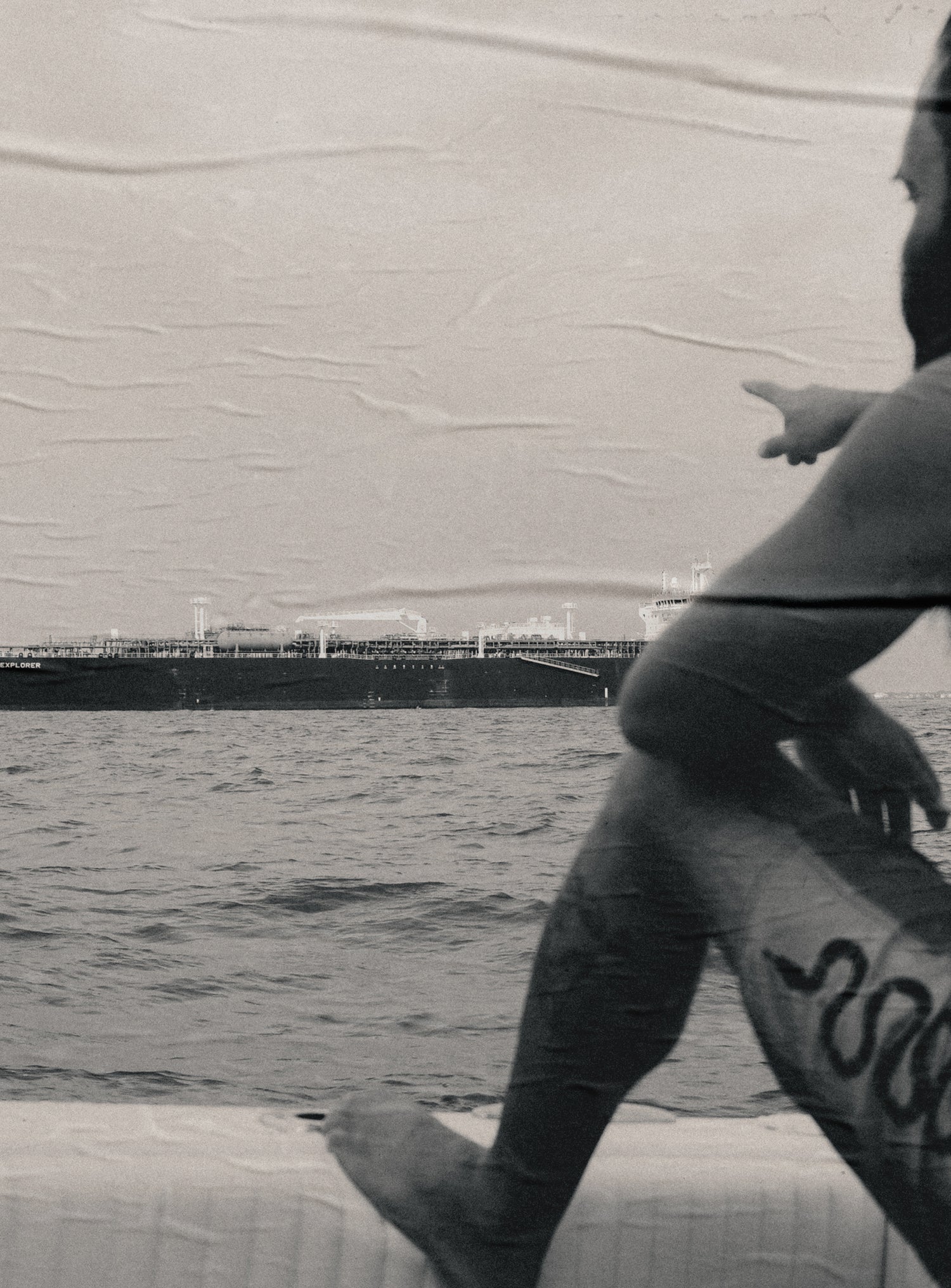
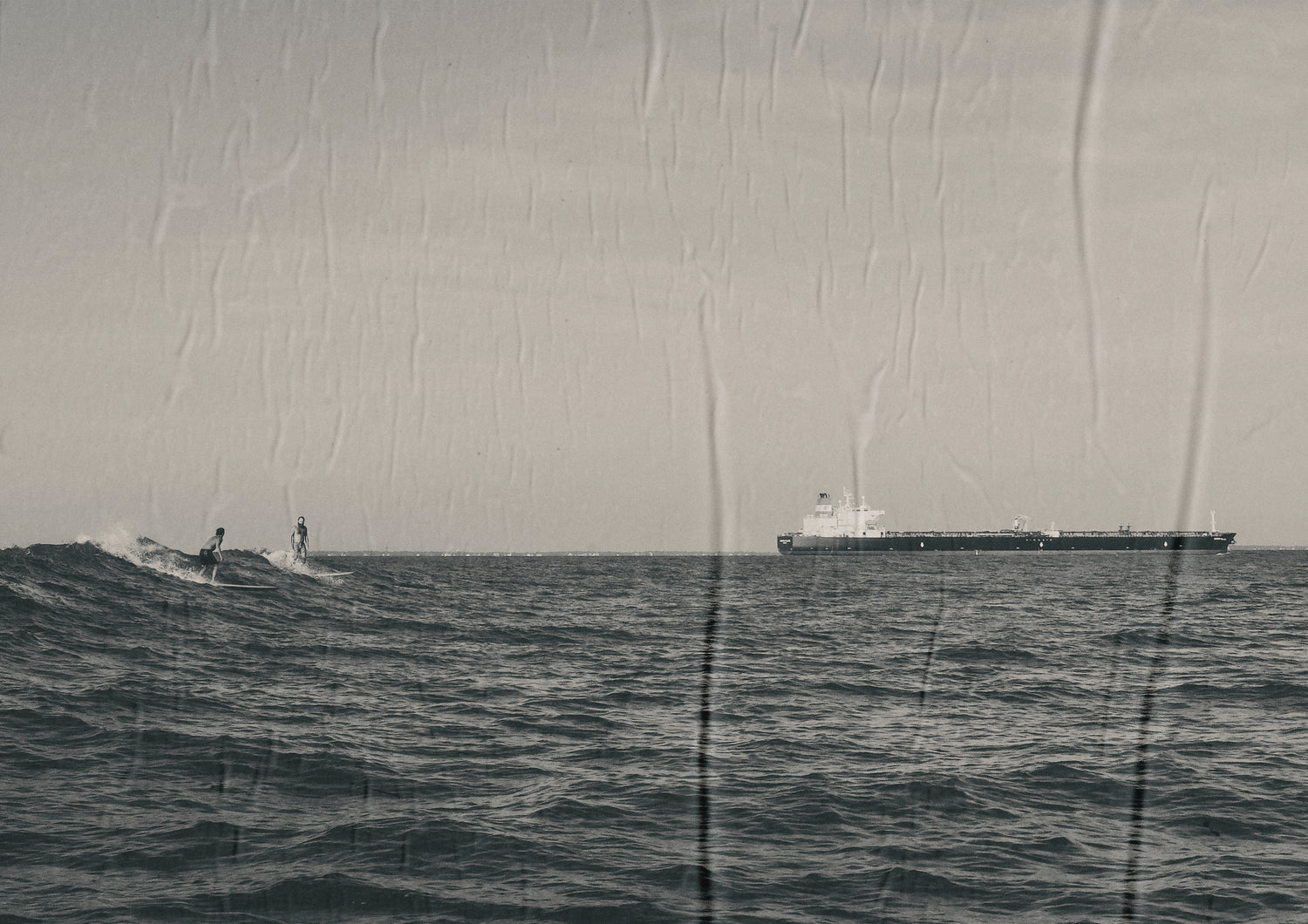 Liquid error (snippets/responsive-image line 51): invalid url input
Liquid error (snippets/responsive-image line 51): invalid url input
